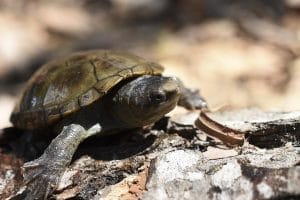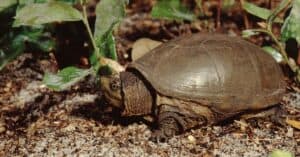Kinosternon oaxacae (Oaxaca Mud Turtle)
Home > Turtle Database > Kinosternon oaxacae (Oaxaca Mud Turtle)
Kinosternon oaxacae, commonly known as the Oaxaca Mud Turtle, is a small freshwater turtle native to Mexico. Known for its unique domed shell and semi-aquatic lifestyle, it inhabits slow-moving water bodies and wetlands.
Native To These Regions
Oaxaca (Mexico)Native Turtle Species Map – Find Turtles by Region
Scientific Classification
Kingdom: Animalia
Phylum: Chordata
Class: Reptilia
Order: Testudines
Family: Kinosternidae
Genus: Kinosternon
Species: Kinosternon oaxacae
Common Names
Oaxaca Mud Turtle
This Hilarious Turtle Book Might Know Your Pet Better Than You Do
Let’s be real—most turtle care guides feel like reading a textbook written by a sleep-deprived zookeeper.
This one’s not that.
Told from the snarky point of view of a grumpy, judgmental turtle, 21 Turtle Truths You’ll Never Read in a Care Guide is packed with sarcasm, sass, and surprisingly useful insights.
And hey—you don’t have to commit to the whole thing just yet.
Grab 2 free truths from the ebook and get a taste of what your turtle really thinks about your setup, your food choices, and that weird plastic palm tree.
It’s funny, it’s honest, and if you’ve ever owned a turtle who glares at you like you’re the problem—you’ll feel seen.
Identification
Description
The Oaxaca Mud Turtle has a domed, dark brown to black carapace, often with a smooth texture. Its plastron is hinged, allowing it to partially close its shell for protection. Adults measure approximately 12–15 cm in shell length.
Sexual Dimorphism
Males typically have a longer tail and a more concave plastron, aiding in mating, while females possess a flatter plastron and a shorter tail.
Check more turtles from the Kinosternon genus
Native Origin and Distribution
Geographical Range
This species is endemic to southern Mexico, particularly the state of Oaxaca. It is commonly found in slow-moving rivers, ponds, and wetlands in the region.
Preferred Habitat
The Oaxaca Mud Turtle prefers shallow freshwater habitats with abundant vegetation. It thrives in areas with soft, muddy substrates and slow water currents.
Behavior
Feeding Habits
Omnivorous in diet, it consumes aquatic invertebrates, small fish, plant material, and carrion.
Predators
Predators include large birds, mammals, and some larger aquatic reptiles. Hatchlings are particularly vulnerable due to their small size.
Reproduction
Breeding Season
Breeding typically occurs during the rainy season, from late spring to early summer.
Reproductive Method
Females lay small clutches of 1–4 eggs in sandy or soft soil near water. Incubation lasts around 60–80 days, with hatchlings emerging during the warmer months.
Conservation
Extinction Status
Listed as Data Deficient.
Threats
Primary threats include wetland drainage, pollution, and human activities such as agriculture and urbanization.
Conservation Measures
Efforts include habitat protection, wetland restoration, and educational programs to raise awareness about the species.
Economic Importance
The Oaxaca Mud Turtle has limited economic significance but plays a vital role in its ecosystem by controlling aquatic invertebrate populations and contributing to nutrient cycling.
Interesting Facts
- The hinged plastron is a defining characteristic, allowing the turtle to shield itself from predators.
- It is one of the lesser-known species in the Kinosternidae family, making it a subject of interest for herpetologists.
- The species is highly adaptable to seasonal changes, capable of aestivation during dry periods.

About Author
Muntaseer Rahman started keeping pet turtles back in 2013. He also owns the largest Turtle & Tortoise Facebook community in Bangladesh. These days he is mostly active on Facebook.















